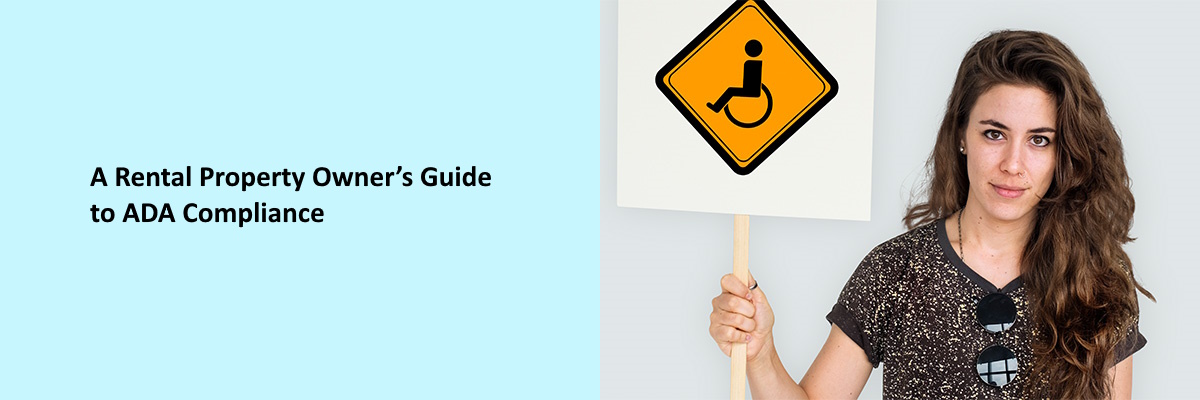Let’s be real, being a rental property owner (and usually your own manager too) is not a 9-to-5 job. You do way more than just collecting rent. You make sure your tenants are okay, the property’s safe, and nothing inside any of the units can cause damage or danger. You’ve probably had to walk into places where someone’s got so much stuff hoarded up it looks like a fire hazard waiting to happen. Or maybe you’ve had to deal with leaks, busted light switches, or even that one tenant who won’t stop letting their dog pee on the balcony.
You do routine checks, handle maintenance, meet and screen potential tenants, convince them your place is better than the one across the street, draw up lease agreements, market vacancies, and sometimes, even if you hire out some of the work, you’re still the one pulling the strings behind the scenes.
But here’s the thing. Even if you do everything else by the book, one overlooked detail can still land your property, and you, in a mess. A legal mess. And that detail is something not every landlord knows enough about: ADA compliance.
That’s what this blog is about. We’re talking Fair Housing laws in the U.S., and more specifically, ADA compliance, what it means, who it applies to, and how to not get caught off guard by it.



What Even Is ADA Compliance in Rental Properties?
So, ADA stands for the Americans with Disabilities Act, which became law back in 1990. Basically, it exists to stop discrimination against people with disabilities, in jobs, transportation, schools, and yes, buildings. Meaning the physical space, the way it’s built, and whether it’s actually usable by someone in a wheelchair, someone with low vision, or someone who depends on a service animal.
When people say “ADA compliance” in rental properties, they usually mean making sure that certain parts of your building or property are accessible to people with physical or mental disabilities. This can include:
- Wheelchair ramps (because stairs don’t work for everyone)
- Wider doorways (for mobility devices to fit)
- Braille signs or audio alarms (for vision or hearing disabilities)
- Lowered countertops (so someone in a wheelchair can actually use the kitchen or reception)
- Grab bars in bathrooms
- Service or emotional support animals being allowed even if you don’t allow pets normally
And the above list? That’s just scratching the surface. There are way more things to think about. Because housing should be fair, period.
Imagine a family of four trying to move out of a dangerous, rundown neighborhood into somewhere better, only to be told “no”, not because of their credit score or background check, but because the owner doesn’t like the idea of people from that part of town. That’s discrimination.
Now, flip the script. A tenant who uses a wheelchair tries to rent your place, but you don’t have a ramp, and you haven’t thought about making your space accessible. That’s also a problem. They have the right to live in a safe, accessible, welcoming environment, and so does their family.
Who Does ADA Actually Apply To?
Here’s where most landlords start getting confused, and I don’t blame them, because the rules are not explained well.
The ADA mostly applies to “public accommodations.” That means commercial spaces, retail shops, offices, restaurants, basically any place where the public can walk in.
So if you’re renting commercial space, ADA rules definitely apply to you.
Now, for residential properties, it’s more nuanced. ADA doesn’t apply to private homes the same way. You’re not required to rip out your bathroom or redo your entire building just because someone might need it.
But, there are situations where ADA does kick in for residential properties:
- You operate a leasing office that’s open to the public
- You own a mixed-use property (like shops downstairs, apartments upstairs)
- You rent out public housing
- You’re a larger property owner or company that serves the public in a broader way
So while individual apartments may not fall under ADA directly, the common areas, leasing office, and commercial zones likely do.
Also, and this is where some landlords trip up, even if ADA doesn’t apply, the Fair Housing Act (FHA) does. And the FHA also protects people with disabilities and requires you to make “reasonable accommodations.” So either way, you’ve got legal responsibilities.
When Does a Property Have to Be ADA Compliant?
If your building was built or altered after January 26, 1993, it must meet ADA standards. Simple as that.
But what if your building is older? Then the law says: you still need to remove barriers if it’s “readily achievable.” Meaning: if it’s not too expensive or technically complicated, you should fix it.
Installing a grab bar in a common bathroom? That’s not going to break the bank. Adding a ramp where there are only three steps? Also doable. Completely tearing out and rebuilding your lobby with a new elevator? Okay, maybe not “readily achievable”, that’s when you document why it’s not possible and look for alternatives.
But don’t ignore it altogether. Even older buildings are expected to do what they can to improve accessibility.
Where Exactly Does ADA Apply Inside a Rental Property?
Let’s break it down:
- Commercial Areas: Yes, 100%. Full ADA compliance needed.
- Leasing Office: If it’s open to the public (and it usually is), yes.
- Common Areas in a multifamily building: Depends, but if the public uses them or if they serve multiple tenants (like laundry rooms, mailrooms, front entrances), ADA likely applies.
- Inside private residential units: Usually not covered by ADA, but the FHA requires reasonable accommodations if requested.
So don’t assume you’re off the hook just because it’s “a home.”
Why Bother with ADA Compliance?
Here’s the brutal truth: If someone with a disability tries to rent your property, and your space is clearly not accessible, you’re not just “missing out” on a tenant, you might be inviting legal trouble.
They can file a complaint. Authorities can open an investigation. Your property might get inspected. You could be forced to make changes and pay fines on top of it.
Even worse? Your reputation gets dinged. And not just among people with disabilities, but everyone. You don’t want to be known as the landlord who discriminates, whether intentionally or through negligence.
And also, from a business point of view, why would you want to limit your pool of potential tenants? A more accessible building = more people who can live there = fewer vacancies. Common sense.
How Do You Actually Make Your Property ADA Compliant?
1. Start by understanding the rules
Go online and look for the ADA Compliance Checklist. There are official versions at ADA.gov, and there are also simplified versions that break it down room by room. This helps you figure out what you need to do based on when your building was built, what type of property it is, and what kind of space you’re renting.
2. Do the changes
Once you know what’s missing, start taking action. Prioritize the basics: entryways, signage, bathrooms, light switches, door handles, height of things like counters and mailboxes. And remember, service animals are not pets, don’t get this wrong. Even if you have a “no pets” policy, that doesn’t apply to someone’s guide dog or emotional support animal under certain conditions.
3. Talk to your tenants
Don’t wait around hoping nobody brings it up. Be proactive. Ask tenants if there’s anything they need or if there’s something that could help them live more comfortably. If someone makes a request for a change in their unit (like adding a ramp or adjusting a counter), consider whether it’s “reasonable” and don’t delay your response. You’re not expected to do everything, but you are expected to try.
4. Document everything
Keep records of what you checked, what you fixed, what requests were made, and how you handled them. This isn’t just for CYA (cover your assets), it shows that you’re taking your responsibilities seriously and staying professional.
If you’re a rental property owner, property manager, or both, we hope you gain valuable insights from this blog. To dive deeper into topics like tenant management and legal compliance, visit our affordable Housing Webinars page. There, you’ll find hundreds of expert-led webinars covering a wide range of subjects to support you in your rental property journey.
Final Thoughts
Being a property owner is not for the faint of heart. You’ve got a million things going on, and ADA compliance might seem like one more headache. But this one’s not optional.
It’s about doing the right thing, following the law, and running a smart business. Because making your property more accessible doesn’t just protect you, it opens the door (literally and legally) to more people, better tenants, and a stronger reputation.
So don’t wait for a complaint. Get informed, make some changes, and do better, not just because you have to, but because you should.


